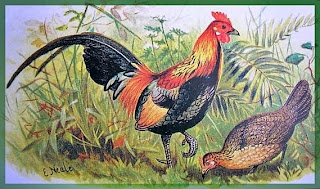Many new species of amphibians, reptiles, a bird and a primate have been discovered in the Mekong river basin since the last one year. The river flows through many countries in the Southeast Asia. This shows how important it is to conserve primary forests in the region.

Photos by PFly and FEXX on Wikipedia: http://en.wikipedia.org/wiki/Mekong_river
About Mekong river:
http://portal.mrcmekong.org/
http://en.wikipedia.org/wiki/Mekong_river
http://www.worldwildlife.org/what/wherewework/mekong/species.html
http://www.worldwildlife.org/what/wherewework/mekong/results.html
Species discoveries in the Mekong basin:
http://www.wildlifeextra.com/go/news/mekong-discoveries011.html
http://www.irishexaminer.com/world/kfaukfididkf/rss2/
http://onlinelibrary.wiley.com/doi/10.1002/ajp.20894/full
http://missbakersbiologyclass.com/blog/2010/11/10/bless-you-myanmar-pug-monkey/
http://ca.news.yahoo.com/208-species-discovered-asias-mekong-region-1-182102929.html
http://www.wildlifeextra.com/go/news/snub-nosed-monkey.html
http://www.sciencedaily.com/releases/2010/10/101026203638.htm
http://en.wikipedia.org/wiki/Myanmar_snub-nosed_monkey
Related documents:
http://www.banca-env.org/myn-environmental.htm

Photos by PFly and FEXX on Wikipedia: http://en.wikipedia.org/wiki/Mekong_river
About Mekong river:
http://portal.mrcmekong.org/
http://en.wikipedia.org/wiki/Mekong_river
http://www.worldwildlife.org/what/wherewework/mekong/species.html
http://www.worldwildlife.org/what/wherewework/mekong/results.html
Species discoveries in the Mekong basin:
http://www.wildlifeextra.com/go/news/mekong-discoveries011.html
http://www.irishexaminer.com/world/kfaukfididkf/rss2/
http://onlinelibrary.wiley.com/doi/10.1002/ajp.20894/full
http://missbakersbiologyclass.com/blog/2010/11/10/bless-you-myanmar-pug-monkey/
http://ca.news.yahoo.com/208-species-discovered-asias-mekong-region-1-182102929.html
http://www.wildlifeextra.com/go/news/snub-nosed-monkey.html
http://www.sciencedaily.com/releases/2010/10/101026203638.htm
http://en.wikipedia.org/wiki/Myanmar_snub-nosed_monkey
Related documents:
http://www.banca-env.org/myn-environmental.htm









 Hume also founded an ornithological journal called 'Stray Feathers', and employed reporters from all over India to contribute articles to the journal. He is known as the 'Father of Indian Ornithology', a title earlier given to Edward Blyth.
Hume also founded an ornithological journal called 'Stray Feathers', and employed reporters from all over India to contribute articles to the journal. He is known as the 'Father of Indian Ornithology', a title earlier given to Edward Blyth. 
